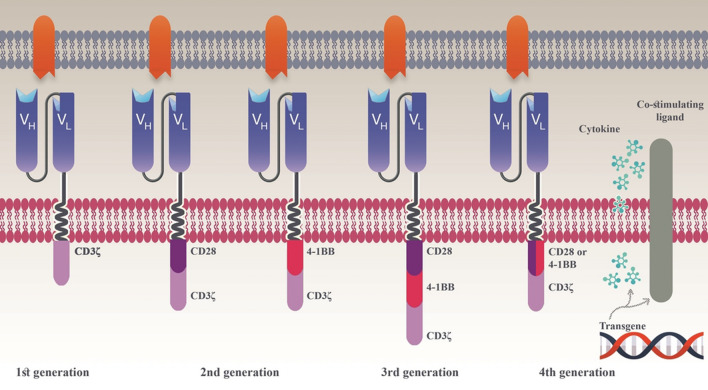Fig. 2.
Various CAR generations classified by their intracellular signaling domains. The first-generation of CAR is composed of an scFv, a transmembrane domain, and the CD3ζ chain as a signaling domain. This molecule provides activation signal only to T cells which encounter T-cell anergy upon repeated antigen stimulation [98]. The second-generation of CAR has a co-stimulatory signaling domain which can be CD28 or 4-1BB [8, 99]. These co-stimulatory signaling domains are responsible for the activation signal which can be provided through the engagement of the targeting domain with the target antigen [99]. The third generation of CARs contains two co-stimulatory signaling domains which can be either the combination of CD28 and 4-1BB or CD28 and OX40 [99]. The fourth generation of CARs (also known as TRUCKs or armored CARs), use the combination of a second-generation CAR alongside factors such as co-stimulatory ligands, cytokines, etc., that enhance the anti-tumoral activity of CAR T cells [100]. Made in ©BioRender—biorender.com

